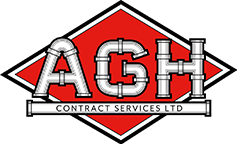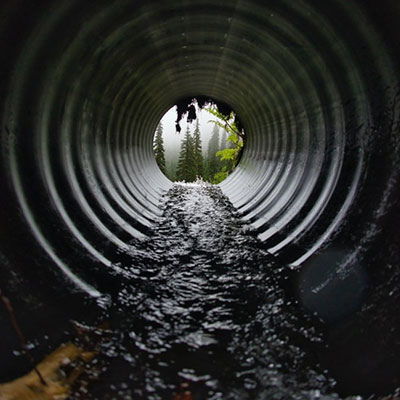How to do a Percolation Test
The Percolation test method explained
The percolation test is the LAST of the 3 mandatory tests to determine if a new or replacement soakaway can be installed. You must do the Groundwater Source Protection Zone search and the Trial Site Assesment Hole first.
There are two very different types of soakaway – foul water soakaways and surface water soakaways. Foul water soakaways deal with small volumes over a long period, whereas the rainwater soakaway may have to handle large volumes in a short time and the percolation test explained here is ONLY for foul water soakaways.( A typical test for a surface water soakaway would be a pit 1000 x 1000 x 2000mm filled to the brim and the level recorded at various times until the pit is empty.)
Be warned, soakaway crates and tunnels are NOT allowed for septic tank and sewage treatment plant soakaways. They are only for rainwater and surface water soakaways. Beware of the 'Cowboy Traders!'
A percolation test hole 300mm x 300mm x 300mm deep should be excavated below the proposed invert level of the effluent distribution pipe. For most sewage treatment units this depth is from 700mm down to 1 metre, i.e the base of the percolation test hole below is 1 metre below ground. This usually requires a large hole to be dug to stand in whilst digging the small percolation test hole.
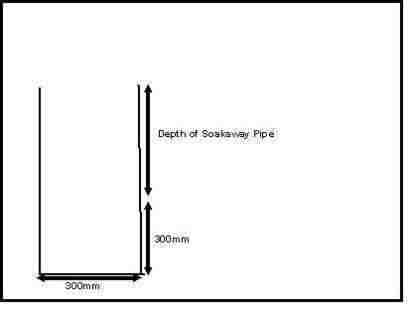
6 inch nails pushed into the sides of the hole, mark the hole 75mm from the bottom and 75mm from the top of the percolation test hole. You can also use a stick marked with permanent marker at the appropriate measurements and put into the hole.
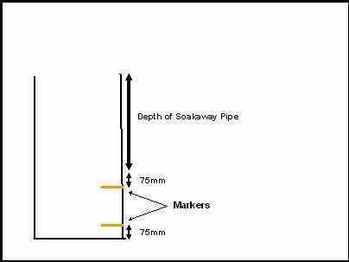
Fill the perc. test hole to a depth of at least 300mm with water and allow it to seep away overnight.
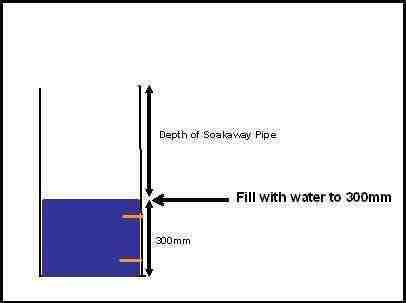
Next day, refill the test hole with water to a depth of at least 300mm and see the time, in seconds, for the water to seep away from 75% full to 25% full level

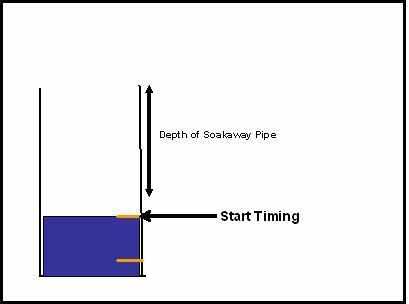
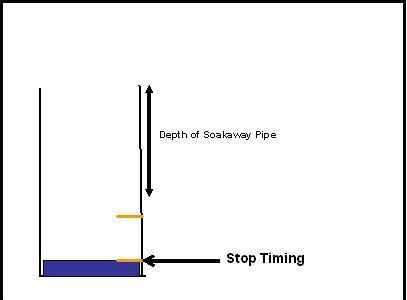
(i.e., a depth of 150mm). Divide this time by 150mm. The answer gives the average time in seconds (Vp) required for the water to drop 1mm.
- The percolation test should be carried out at least three times with at least three trial holes. The average figure from the tests should be taken. The test should not be carried out during abnormal weather conditions such as heavy rain, severe frost or drought.
- Drainage field soakaway disposal should only be used when percolation tests show average values of Vp of between 15 and 100 and the preliminary site assessment report and trial hole tests have been favourable. This minimum value ensures that untreated effluent cannot percolate too rapidly into ground water. Where Vp is outside these limits effective disposal is unlikely to take place in a soakaway drainage field.
The percolation test calculations for a soakaway are as follows
Area (A) = V X P X 0.20 for sewage treatment units and
Area (A) = V X P X 0.25 for septic tanks
V = the time is seconds for the water in the test hole to drop by 1mm.
P = the max. number of persons that the unit is designed to serve
The calculation gives the AREA in SQUARE METRES required for the soakaway trenches. Further calculations are required to give the length of pipes required depending on the width of the trench, e.g. for a 600mm wide trench, the AREA would be divided by 0.6
- OTHER FACTORS Drainage fields are not to be constructed under driveways, parking areas, buildings, near trees, dwellings, boundaries, watercourses, boreholes, etc. Please contact us for minimum distances allowed.
Soakaway drains MUST NOT be installed unless the Site Assessment and Soil Profile deep test hole show that there is a minimum of 1.2metres between the bottom of the drain and the water table or bedrock. If it is less than this, then the water has not got enough soil depth to drain away
The Environment Agency has confirmed to us that soakaway crates are NOT acceptable for foul water soakaways as they do not conform to the Building Regulations or the BS 6297 2008. Crates are only allowed for rainwater soakaways.
